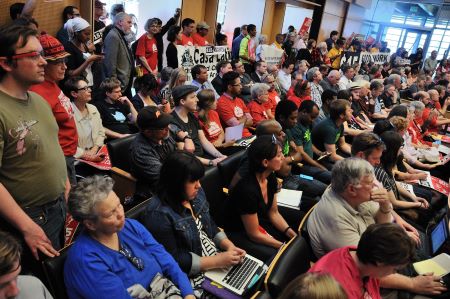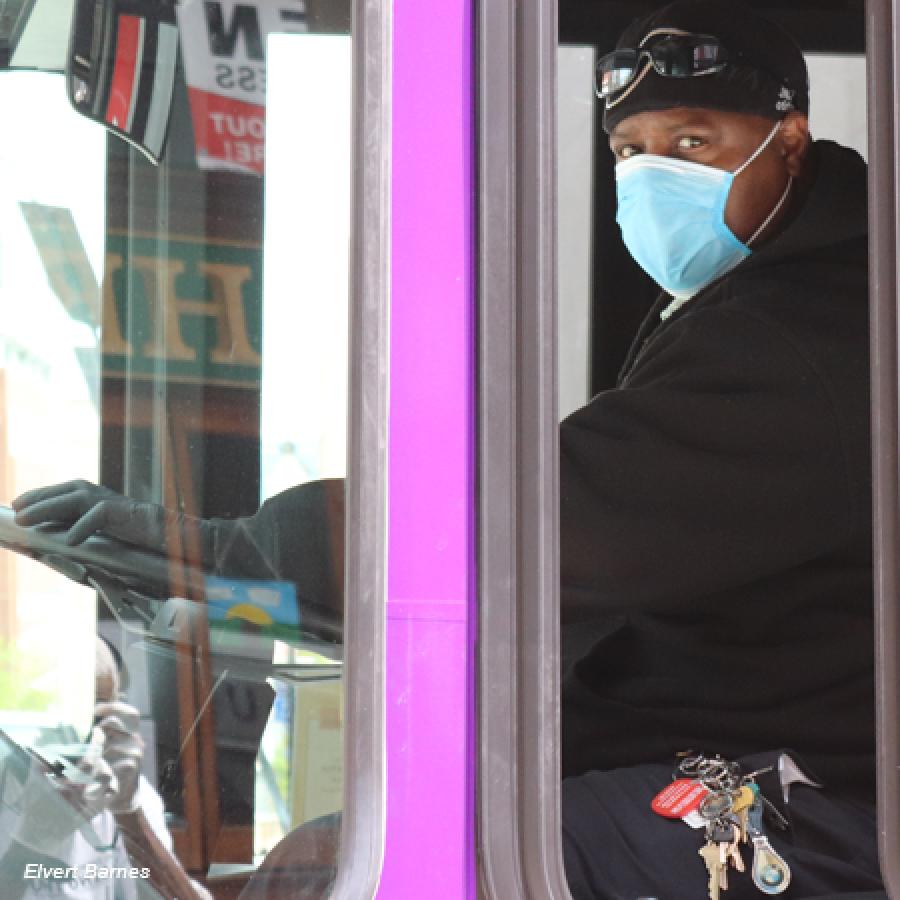Wages: $15/hr: All workers should earn a living wage that allows them to meet their families' basic needs.
Insights & Analyses
- The share of full-time workers aged 25 to 64 earning at least $15/hour and living below 200 percent of the poverty level was lower in 2022 than in 1990. However, in states like Arizona, Oregon, and Rhode Island, this trend varied by race: people of color saw slight increases in their share, while white workers experienced slight decreases.
- Overall, just 77 percent of people of color, aged 25 to 64, earn $15/hour or above compared to 87 percent of white people. Among full-time workers aged 25 to 64, just 80 percent of all US women earn at least $15/hour compared to 85 percent of all men.
- There are wide wage inequities by race among people with similar education levels: 68 percent of White people, aged 25 to 64, who did not graduate high school earn at least $15/hour, compared with 57 percent of people of color.
- Among full-time workers, aged 25 to 64, 90 percent of Asian Americans born in the US earn at least $15/hour compared to 74 percent of Pacific Islander immigrants, and only 67 percent of Latinx immigrants.
Drivers of Inequity
Wages on the lower end of the wage distribution are stagnant, causing a rise in the number of people who are working yet still struggling economically. Shifts in the US economy, such as corporate outsourcing to countries with lower wages, employer consolidation, and declines in union membership, are driving this stagnation. Federal policy choices, such as fiscal austerity and a minimum wage that has not been raised since 2009, also contribute to the rise in the working poor population. These shifts disproportionately impact women and people of color because they are overrepresented in low-paying jobs as a result of historical factors, such as racial segregation and policies that banned women and people of color from accessing education and higher-paid professions. Ongoing factors, like discriminatory hiring practices, lack of affordable childcare, and disparities in generational wealth, also contribute to working poverty.
In the mid-2010s, advocates around the US used $15 an hour as a benchmark minimum wage for campaigns at the local, state, and federal level. As of 2025, fifteen states and Washington DC have set minimum hourly wages higher than $15. However, due to inflation and rising costs of living, $15/hour is no longer a livable wage in any part of the nation.
Strategies
Grow an equitable economy: Policies to ensure living wages for all
- Raise the federal minimum wage.
- At the state and/or local level, create dynamic wage policies that index the minimum wage to the median wage, to prevent worsening gaps between low-income and median-income workers.
- Raise the floor on low-wage work by requiring paid sick days, ending wage theft, strengthening workers' rights to organize and collectively bargain, and ensuring fair scheduling.
- Enact living-wage laws that require government offices and contractors to pay living wages.
- Target economic development and workforce efforts to grow high-opportunity sectors that provide pathways for people without four-year degrees or those facing other barriers to employment.
- Enact policies that safeguard gig workers’ rights, such as policies that prevent the misclassification of workers as independent contractors or publicly-sponsored benefits platforms for independent workers operated at the state level.
- Enact salary transparency laws that require employers to include salary ranges for open positions, which help to prevent the undercompensation of female employees.
- Establish standards to ensure that public investments in economic development and infrastructure create living-wage jobs.
- Pursue full-employment economic policies that promote hiring, increased work hours, and living wages for low-wage workers.
- Expand access to high-quality public education, create cradle-to-career pipelines for vulnerable youth, increase access to affordable childcare, and invest in universal pre-K.
- At the federal level, institute a federal jobs guarantee, dedicate 1 percent of infrastructure investments to a fund for inclusive job and contracting supports, enact a $15/hour minimum wage for all workers, and guarantee workers’ right to organize at scale.
Strategy in Action
Seattle’s minimum wage keeps pace with rising costs. Seattle was the first major city in the nation to adopt a $15/hour minimum wage. The advocacy effort started in the small neighboring city of SeaTac, home to the Seattle-Tacoma International Airport. In 2005, Alaska Airlines fired hundreds of unionized airport employees and replaced them with nonunion contractors, reducing hourly wages from $13 to $9. Service Employees International Union (SEIU) Local 775 organized in response, leading a diverse community coalition in a successful years-long campaign to raise SeaTac’s minimum wage to $15. Their efforts culminated in Proposition 1, which voters passed in 2013. This victory built momentum to expand the campaign to Seattle, whose City Council approved a $15 minimum wage in mid-2014. Crucially, Seattle’s policy indexes the minimum wage to year-over-year inflation, increasing at the start of each year per the regional Consumer Price Index. As of 2025, Seattle's minimum wage is $20.76, compared to the statewide minimum wage of $16.66. Analyses of the policy’s initial impact suggest that these minimum wage increases did lead to net income gains for the region’s lowest earners, although income inequality in Seattle worsened during the 2010s as well. Learn more.

Resources
- Reports: A history of the federal minimum wage: 85 years later, the minimum wage is far from equitable; The value of the federal minimum wage is at its lowest point in 66 years; Report: $15 Hourly Wage Isn't Livable Anywhere in the U.S.; How family sustaining jobs can power an inclusive recovery in America’s regional economies; Wage inequality fell in 2023 amid a strong labor market, bucking long-term trends; The Productivity-Pay Gap; The Working Poor in California; Why the U.S. needs at least a $17 minimum wage
- Data: Living Wage Calculator; Family Budget Calculator; State of Working America; Opportunity Insights Economic Tracker; The Opportunity Atlas; The Self Sufficiency Standard; Minimum Wage Tracker





